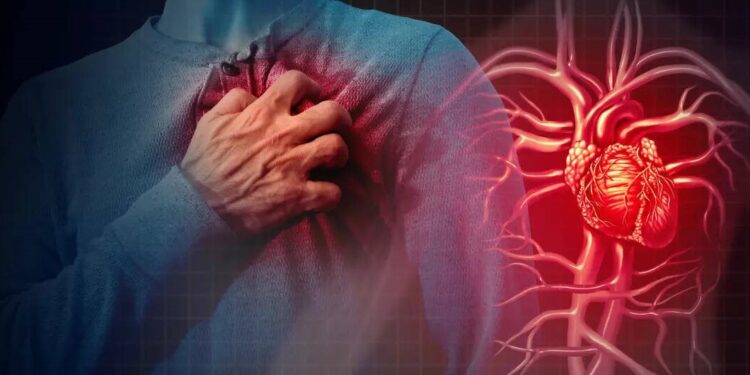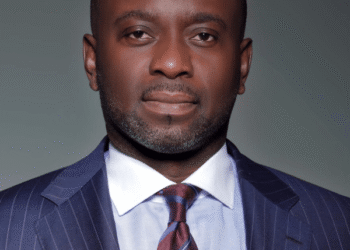I had a relative who experienced chest pain one afternoon, which was signs of a heart attack. He brushed it off and said that he’d sleep on it and that if he still felt lousy, he’d go to the hospital the next day. He died of a heart attack that night.
Dr. Donald Lloyd-Jones, a professor of cardiology at Boston University Chobanian & Avedisian School of Medicine, told me he understood why someone would hesitate to go to the emergency room.
It’s “a very human thing” to assume you’re overreacting, he said. “You don’t want to cry wolf.”
But acting quickly when you have symptoms of a heart attack is critical. They happen when blood flow to your heart is cut off or reduced. Without blood flow, the affected heart muscle will begin to die. And any delay in getting care can cause irreversible damage, said Dr. Seth Martin, a cardiologist at Johns Hopkins Medicine.
Deaths from heart attacks have dropped nearly 90 percent since 1970, thanks to lifesaving interventions and public health measures.
But the numbers remain high: Every year, about 805,000 people in the United States have a heart attack, and research suggests that 12 percent of them are fatal.
And heart attacks aren’t all sudden and intense, said Dr. Latha Palaniappan, associate dean and professor of cardiovascular medicine at Stanford University School of Medicine. “Not every heart attack looks like what you see in the movies,” she said, “like, someone clutching their chest and falling over.”
I asked the experts to go through the most common signs.
Chest pain or discomfort
The primary symptom of a heart attack is pain or discomfort in the center of the chest, Dr. Lloyd-Jones said. All the experts described the feeling as if an elephant were sitting on your chest.
This can mean pressure, a squeezing sensation, or a feeling of fullness, Dr. Martin added.
Some people may interpret those symptoms as heartburn, he said. But heartburn tends to have “a burning quality, which is different than a pressure, squeezing, or fullness,” he explained. But those differences aren’t “a foolproof test,” he warned.
If the pain lasts for a few minutes or repeatedly goes away and comes back, “take that very seriously and seek help,” Dr. Martin said.
And, Dr. Palaniappan said, if the symptoms are “new or severe or unusual for you,” it’s safer to assume that they might be heart-related.
Pain in the jaw, neck, back, or arms
Often, chest pain will radiate to other parts of the body, Dr. Lloyd-Jones said. People may feel the pain moving up into their neck, or into their shoulders or arms, he said, and it tends to feel like pressure.
Most commonly, Dr. Martin added, people feel pain in their left arm because “the heart is more of a left-sided structure,” but they can also experience pain in their right arm.
Sometimes the chest pain can travel to the back or the jaw, which may feel like an ache, he said.
Shortness of breath
When a damaged heart muscle can’t pump enough blood, Dr. Lloyd-Jones said, it can cause fluid to build up in the lungs, leading to shortness of breath.
This typically comes on suddenly, Dr. Martin said, and can happen when you’re just sitting still — you don’t have to be exerting yourself. It can occur with or without chest discomfort.
Fatigue, faintness, or nausea
Chest pain is a classic symptom, but others may not be as well-known. Pay attention, for example, if you have unusual or unexplained tiredness, Dr. Palaniappan said.
“My father, for instance, died of a heart attack in 1984, and his symptoms started with unusual fatigue,” she said.
Nausea and light-headedness are other signs, Dr. Martin said. You may also experience feelings of anxiety or doom, or break into a sweat and feel “cold and clammy,” he added.
And over 20 percent of heart attacks are considered “silent,” causing either no symptoms, mild symptoms, or those that people don’t connect to a heart attack. It might look like the flu or indigestion, Dr. Martin said.
People often don’t recognize them when they’re happening, but the damage to the heart muscle is detected later with diagnostic testing, he added.
All this is a reminder that if you’re experiencing unusual symptoms, it’s never a bad idea to be evaluated, he said.
And if you have one or more heart attack symptoms, don’t drive yourself to the hospital — call 911. This is almost always the fastest way to get lifesaving treatment, according to the American Heart Association, because EMS crews can begin treating you as soon as they arrive.
Getting treatment quickly significantly increases your chances of survival and recovery, Dr. Palaniappan added. (And studies have long shown that women in particular are more likely than men to dismiss the warning signs of a heart attack.)
Ideally, Dr. Palaniappan said, you should arrive at the E.R. within 30 minutes of noticing symptoms and get treatment within 90 minutes of arriving at the hospital.
In any case, don’t sleep on it like my relative did, the experts said — they’d much rather you come in. And if it turns out you’re not having a heart attack after all, Dr. Lloyd-Jones pointed out, that’s excellent news.






